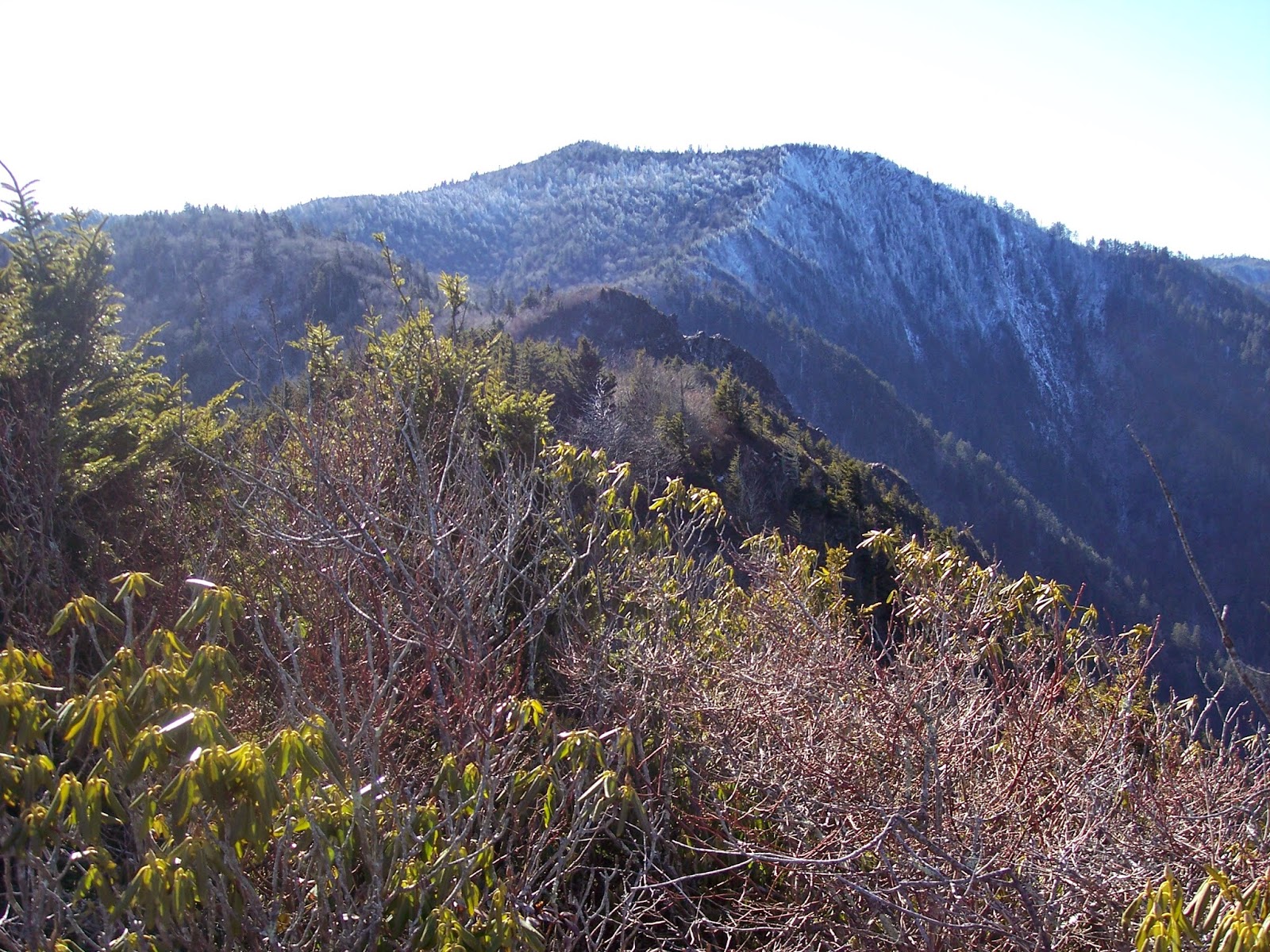As we worked our
way up the Jumpoff, we spent more time in the moss and bushes than we spent in
the creek because the creek was now a long, winding cascade which was too steep
and slippery for us to trust. Only occasionally could we get in it and climb
directly on its rocky path and even then only on segments that were ten or twenty
feet high – if any higher, a slip and slide would be long and painful, maybe
deadly.
The result was a
long, slow ascent as we grabbed and pulled and pushed and rested. Repeat,
repeat, repeat. The next day, as I recuperated from our adventure, my legs and
arms were a little sore, but the body part that suffered the most was my
fingers. The muscles in my fingers
were almost too sore for me to grip door knobs, write with a pen, and type on a
keyboard. I’ve never seriously pondered the fact that there are muscles in our
fingers, and to the best of my recollection I’ve never done any activity that
actually made my finger muscles sore… until the grabbing and pulling of this
trip. From now on I guess I’ll have to put finger exercises into my workout
routine; although, I have no clue what kind of exercise to do to get a good
finger workout; maybe kneading bread dough or digging in sand. Is there such a
thing as finger curls? It’s a question that personal trainers probably aren’t
asked very often because finger muscles aren’t glamour muscles. Rock climbers,
on the other hand, would know the value of a buff hand.
This was the
first trip on which I wore gloves. A couple of recent, off-trail trips had
resulted in some damage to my hands and wrists. I normally get some bumps and
bruises, but on one of these trips I had managed two good cuts on my hand and
wrist. I don’t know how I got them. In fact, as I recall, Charlie and Keith
asked where I got the bloody cuts, and I couldn’t tell them because I hadn’t
noticed until they pointed them out. Although, I suppose I would have noticed
sooner or later because one of them wouldn’t stop bleeding. As a result, I have
some good pictures of me wearing a blood-stained shirt. It looks worse than it
really is which is the way I like things to be – that is, not as bad as they
seem. The cut on my wrist didn’t bleed a lot, even though it was deeper and
longer. In fact, Keith called is a “laceration” which had a nice, manly ring to
it, but again it sounded worse than it really was.
So, after that
trip, I began wearing gloves on some of these off-trail jaunts. Some guys wear stout,
sticky gloves like NFL receivers wear, but I opted for a $13 pair of leather work
gloves from Wal-Mart, and in this case that seemed somehow appropriate. Not
only were these gloves less expensive, but they had a simple “going to work” appearance
that I kind of like because some of these hikes are a lot like work, even to
the point of looking forward to quitting time when you can go home and take a
shower. My hiking partners use headlamps on our night hikes and Charlie wears
protective goggles on some of these trips, so between headlamps, goggles, and
gloves we look like a gang of laborers heading down into the coal mines. All
that’s missing are lunch pails and hard hats.
This cascade,
which we now call the Jumpoff Cascade, went on and on and on. One hundred feet,
two hundred feet, one football field. More climbing. Four hundred. Five
hundred. Two football fields. More climbing. Seven hundred. During the climb we
didn’t know exactly how long this cascade extended, but we made a pretty good
guess based on elevation and angle. Greg, Keith, and Charlie all had altimeters
which measure elevation using barometric pressure. Their equipment all pretty
much agreed that after 1,000 feet of vertical elevation gain, we came to a
split in the cascade. We had ascended vertically 1,000 feet at roughly a 45
degree angle, which would mean our horizontal distance was about 1,000 feet as
well. Using the old Pythagorean Theorem from high school geometry class for
calculating the hypotenuse of a right triangle, we came up with an estimate of
about 1,400 feet. Up to this point, this cascade – which still continued up
both of these small forks at this junction – was 1,400 feet long!
To grasp the
significance of that, consider that Ramsey Cascades, one of the most popular
waterfalls in the park, is about 100’ high. Abrams Falls, another visitor
favorite, is about 30’ high. Yes, these two waterfalls have much greater volume
and width than Jumpoff Cascade, which at this high elevation is generally just
a heavy trickle… but 1,400 feet for cryin’ out loud! And it continues another
one or two hundred feet up both of these upper forks on Mount Kephart.
It’s discoveries
like this that make hiking in the backcountry really special. There are hidden,
rarely-visited waterfalls and cascades all over the park: Mill Creek, Upper
Ramsey, Cannon Creek, First Trib. They are everywhere, and in terms of sheer
length, Jumpoff Cascade dwarfs them all.












